No More Rule 17 (Proper Course)
Published on July 26th, 2016
by Dave Perry
To help you understand the ways the 2016 Test Rules for Match Racing will change the way the game is played, I have put together several presentations, which combined with the text of the 2016 Test Rules and several other World Sailing supporting documents, are on the US Sailing Match Racing website under The 2016 Test Rules for Match Racing.
Here are excerpts from my report, A Different Game, illustrating how the match racing game is significantly different on the downwind legs with the deletion of Rule 17 – On the Same Tack; Proper Course:
Rule 17, which is the “proper course rule”, has been completely deleted from the 2016 Test Rules for Match Racing. The reason is to make the game simpler to play and officiate. Now umpires will not have to decide whether boats are sailing on or above their “proper courses”, and sailors will not have to be concerned about what the umpires are deciding about the boats’ proper courses.
However, the deletion of rule 17 changes the game significantly, making trailing boats much more powerful. Here are some of the changes in the rules and tactics downwind and around the leeward mark.
When the trailing boat (Y) rounds the windward mark within a boat length of the leading boat (B), she is much stronger. If she becomes overlapped to leeward on the other boat (B), even by one foot, she has no proper course limitation, meaning she can luff and sail up to head to wind! She still has to initially give B room to keep clear when she acquires the right of way (rule 15), and room to keep clear when she changes course (rule 16.1), including complying with MR CALL G2 (giving W room to drop her spinnaker). But this is a major game change! Boats ahead will have to work hard not to let boats behind overlap them to leeward (need good spinnaker sets!); and if it happens, they need to be ready to luff hard, and possibly drop their spinnakers and get their jibs up. See Figure 1.
If Y sees B starting to catch up and threaten to overlap her to leeward (“hook” her), one tactic for Y is to sail deep, and just as B is about to get the overlap, Y gybes to starboard. If B is locked in to Y’s right (looking downwind), then B will be forced to gybe to keep clear, and Y can control B for the entire leg. Of course, B will not want to allow herself to get locked in to Y’s right, so B will likely luff as Y is gybing. The move for Y is to gybe right back (do a double-gybe, leaving the pole on the mast), and luff B hard as B swings across Y’s transom. See Figure 2.
This changes the game in the lower right corner of the downwind leg (looking downwind). If the boats are on starboard tack and Y gets a leeward overlap from clear astern, under the old rules Y had to then start thinking about doing a double-gybe to regain luffing rights before getting to the port-tack layline, etc. This commonly resulted in a series of flags, fake double-gybes, etc. Those days are gone! With no rule 17, Y can sail past the layline and/or luff with just a one foot overlap, so she is much stronger to the point that boats need to be very careful not to put themselves in a position where they are above the starboard-tack layline to the mark with the other boat close astern. See Figure 3.
If the boats are rounding the leeward mark and the boat astern (Y) becomes overlapped to leeward of the boat ahead (B) during the rounding, Y must give B room to sail B’s proper course around the mark under test rule 18.2(a)(2). But once B is no longer overlapped with the mark (i.e., she has left the mark astern and therefore has completed her rounding maneuver), Y has no proper course limitation (no rule 17) and can luff up to head to wind, and force B to tack, provided she complies with rule 16.1 (changing course). See Figure 4.
To watch a great race, showing no rule 17 in action, watch the video below:
After some lead changes and a dial down at 4:00 on the counter, Bjorn Hansen is ahead on the second downwind and gybes to starboard. Mathieu Richard, who has a penalty, figures he can’t roll and kill his penalty in that much wind, so he crosses over and gybes onto starboard to leeward of Hansen. He then surfs in to leeward with luffing rights because rule 17 has been deleted. Richard luffs carefully to give Hansen room to keep clear. Once Hansen’s spinnaker breaks, Richard bears off to give Hansen room to drop his spinnaker.
Watch to the end to see an exciting finish. In fact, watch the whole clip to see a great race!
——————-
Re-published from The Dial Up, a FREE e-newsletter covering all things Match Racing in North America. To subscribe, click here.

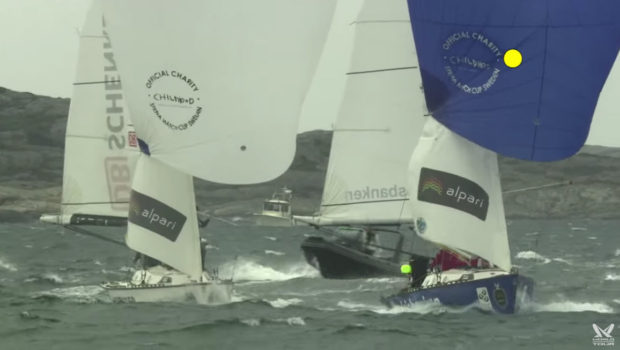


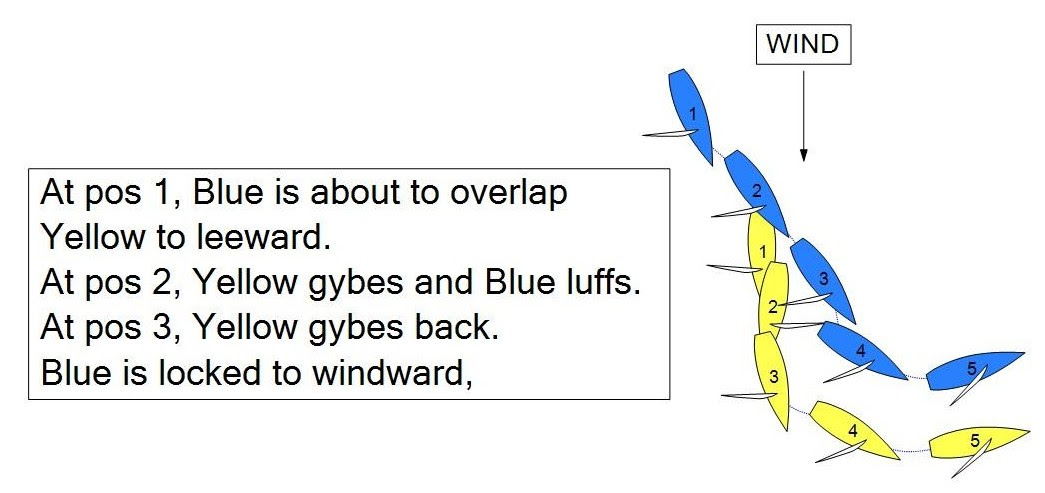
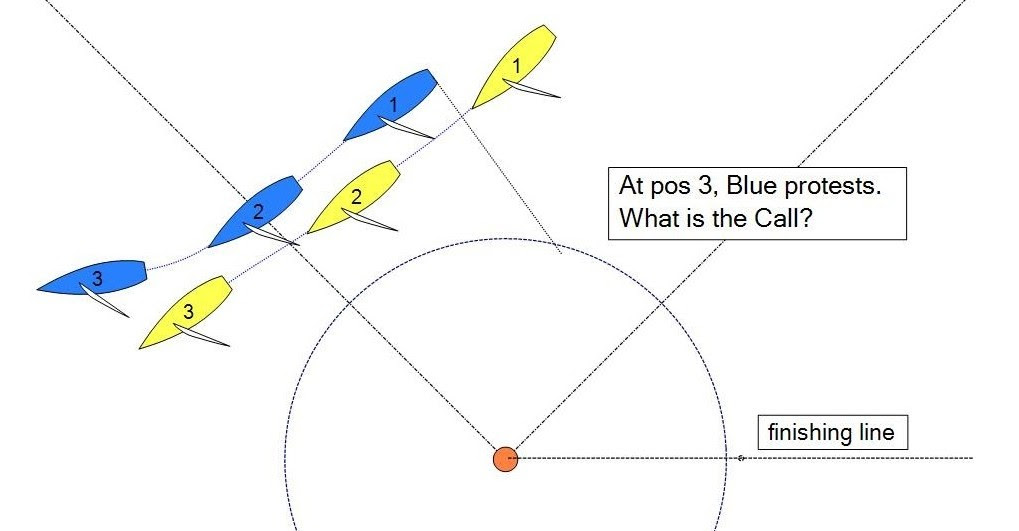
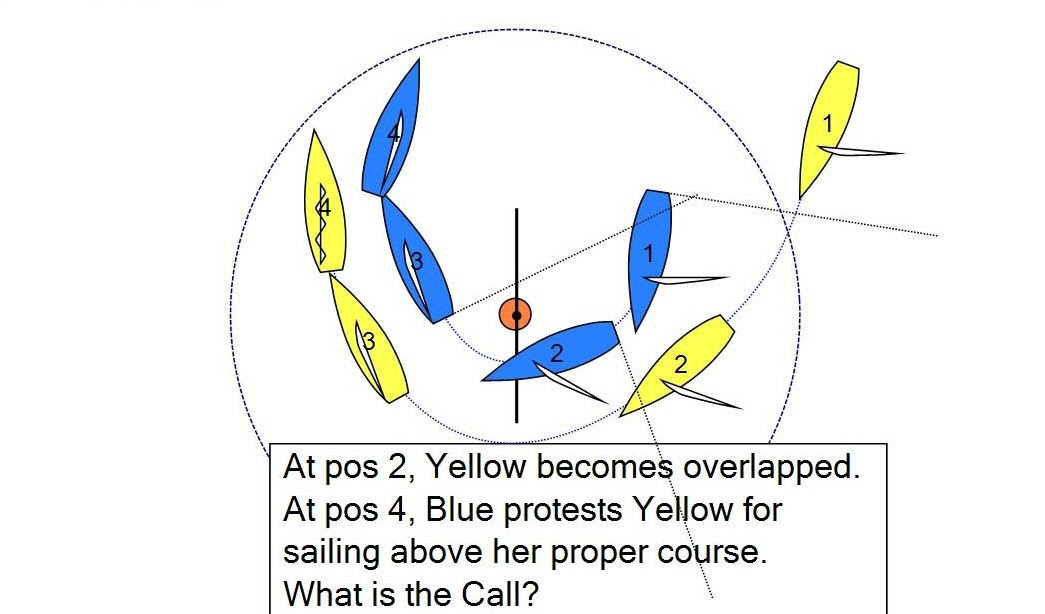

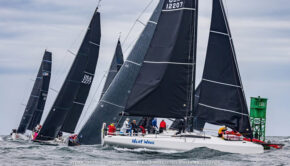
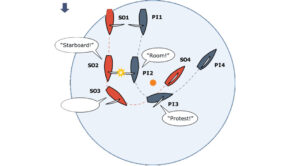
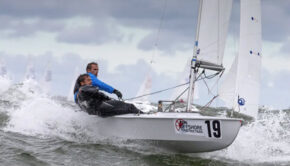

 We’ll keep your information safe.
We’ll keep your information safe.